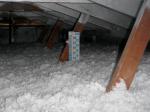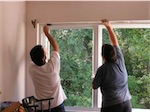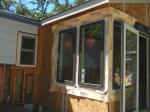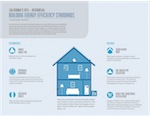Windows today are typically made of at least two pieces of glass sealed together all around and filled with an inert gas in the small gap between the two glass panes. The glass surfaces facing the inside (where the inert gas is) are coated with materials that affect the heat transfer. Many windows are called Low-E (for low emissivity) and they generally provide good comfort and save energy. But to pick the optimal windows requires digging a little deeper.
Performance
There are three key properties that affect the thermal comfort and energy usage: U-factor, Solar Heat Gain Coefficient (SHGC) and Air Leakage.
U-factor measures how much a window (glass and frame together) conducts heat from one side of the window to another. The lower the U-factor, the lower is heat conduction. To be precise, a U-factor of 1 means a perfect conductor and a U-factor of 0 means a perfect insulator. Therefore a window with lower U-factor retains heat better in the house in winter and keeps heat away better in summer. A lower U-factor is always desirable and works all year around. Ideally, get the lowest possible U-factor that one can afford. Practically, in most climate zones, a U-factor of about 0.35 is adequate. In extreme climate zones, either extremely hot or extremely cold, U-factor lower than 0.3 will be helpful.
SHGC measures the proportion of solar heat that passes through the window glass. Again, the lower the SHGC value, the less solar heat passes through. An SHGC of 1 means all the solar heat passes through, an SHGC of 0 means none.
Unlike the U-factor, the choice of a proper SHGC value is a little trickier. In summer, we want to block as much solar heat as possible, so a lower SHGC is desirable. In winter, however, we like to make of the solar heat to lessen the use of a furnace, hence we would prefer a higher SHGC. Since variable or tunable SHGC products are not here yet, we have to make a compromise. The compromise depends on the climate zone. In mild climate zones, pick an SHGC no higher than 0.3. In colder climate zones, pick one in the 0.5 range.
Making matters more complex is that the position of the sun changes in the course of the day. The sun’s heat tends to be stronger in the afternoon. For a particular house, it is best to use a relatively higher SHGC window facing east to catch the morning sun and a relatively lower SHGC window facing west to cut off the more intense afternoon sun. If different SHGC windows are chosen, it is very important to keep the labels on so that the installers will not accidently put the wrong SHGC windows on the wrong side.
| Recommended Window Specification | ||||
|---|---|---|---|---|
| Whole Window U-factor | SHGC | SHGC – South facing when solar heat is desired | ||
| Hot Climate (double or triple pane) |
0.17 – 0.30 (lower is better) |
0.25 – 0.37 (lower is better) |
0.36 – 0.63 (very location-dependent) |
|
| Cold Climate |
Double pane (if you settle for them) |
0.27 – 0.39 (lower is better) |
0.42 – 0.55 (higher is better) |
0.42 – 0.65 (higher is better) |
| Triple pane (if you can afford them) |
0.17 – 0.26 (lower is better) |
0.33 – 0.49 (higher is better) |
||







